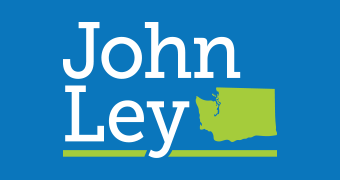Statewide, Washington transit ridership continues to decline
The Washington State Department of Transportation has updated their Multimodal Mobility Dashboard with numbers for 2021. Not surprising to most people, statewide transit ridership remains depressed.
Statewide, public transportation (mass transit) for commuters carried only 2.1 percent of people, down from 7.1 percent in 2019. That’s a 70 percent decline! Vanpool ridership was down about 78 percent.
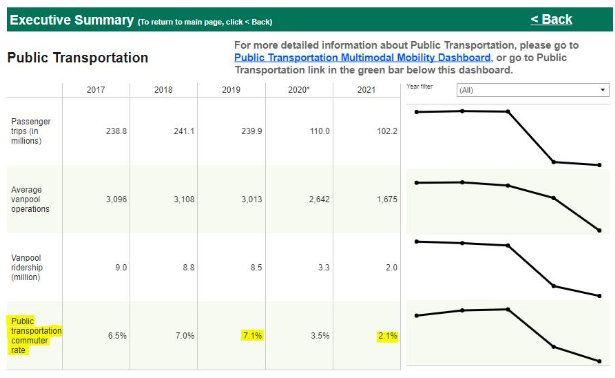
In transit-loving Seattle, a separate report by EMC research also shows the dramatic decline, as people working remotely remain at unprecedented levels. Transit ridership plummeted from 42.9 percent of trips to 18.6 percent, a 66% decline. That compares to only a 1 percent decline in SINGLE OCCUPANT VEHICLE transportation.
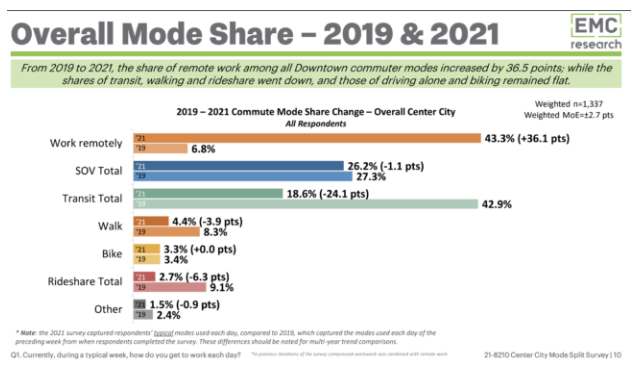
In Clark County, the numbers continue to be bleak, especially for transit ridership across the Columbia River into Portland. WSDOT reports in 2021, buses moved 0.4% of all vehicles and travelers on I-5 at the bridge.

Why on earth would Greg Johnson’s Interstate Bridge Replacement team accept a prediction that 26,000 to 33,000 people would travel using transit in 2045? That would be a 33-fold increase above today’s numbers. Clearly the FACTS don’t show any large numbers of people using transit across the Interstate Bridge.
This data is confirmed by C-Tran, in a Sept 2022 Transit Development Plan (2022 – 2027) report. The “commuter” ridership into Portland has plummeted to less than 1,000 per day. While “local” ridership has roughly a 40 percent decline; the commuter ridership decline appears to be around 70 percent.
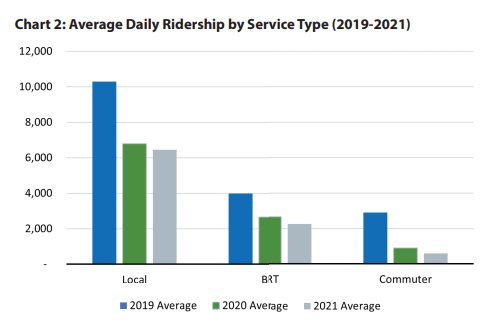
Note the BRT ridership numbers as well, because BRT is supposed to be a “high capacity” transit system. Average daily ridership on The Vine BRT system had been cut nearly in half, from about 4,000 daily riders in 2019 to about 2,200.
People should understand that when C-Tran asked the federal and state governments for money for The Vine BRT system, the bus ridership they were replacing carried about 5,000 daily riders on two separate bus lines. C-Tran “promised” ridership would increase to 5,000 to 6,000 daily riders initially, and increase to 8,000 to 9,000 riders by 2035. Clearly, there is NO NEED for any “high capacity” mass transit in Clark County.

In fact the two bus lines (4 & 44) that were eliminated to create The Vine BRT had experienced a 25 percent decline in ridership for the two years prior to the creation of The Vine. Average weekday ridership was just over 5,000 riders in 2016, down from 6,900 riders in 2014.
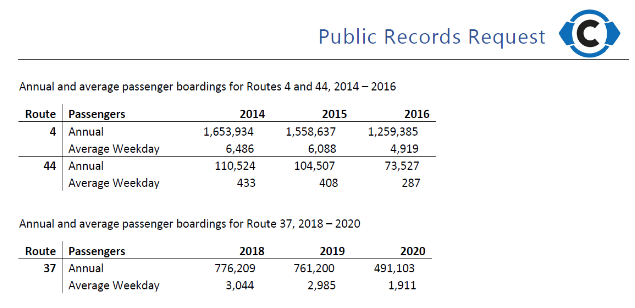
The Route 37 shown above is the line being replaced by the new $50 million Mill Plain BRT line which is supposed to begin operation in 2023. Clearly there is no need for the $1 million each “double-articulated” buses.
Of the many questions these numbers raise, at the top of the list is why don’t the federal and state governments demand a refund of some of the money they contributed to the creation of the BRT system? After all, C-Tran lied, or used hugely flawed forecasts in making their request for money.
Furthermore, after such flawed results on the original BRT system, why would the federal or state government contribute any new funds to a second C-Tran BRT system? And as C-Tran prepares to ask for funding for a 3rd BRT system, the answer of course should be “No” because they have failed to meet earlier promises regarding ridership.
Finally, farebox recovery continues to decline at C-Tran and probably all transit agencies. Passenger fares only cover 5.9 percent of C-Tran’s operating costs.
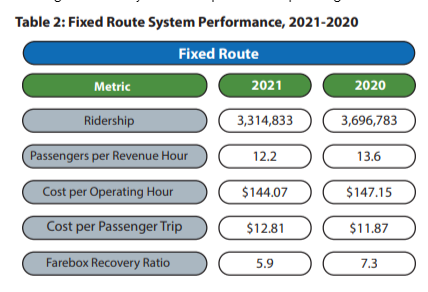
Note that for each hour a bus is providing service, a bus carried only 12.2 passengers in 2021. Their 2021 budget called for spending about $60 million, to carry 12 people an hour!
Even by 2027, C-Tran is forecasting that passenger levels will NOT have returned to pre pandemic levels, when they had about 6 million annual boarding passengers. Furthermore, as reference, C-Tran highest number of boarding passengers was 7.75 million in 1999. It has been a 2-decade decline.

Yet C-Tran expects to spend $252 million on capital projects in a period when they expect ridership at best, to recover to 75 percent of low pre pandemic levels. And at a time when farebox recovery is only 7 cents on the dollar.
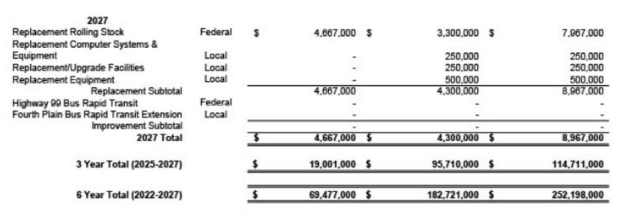
Where’s the value for the hundreds of millions of taxpayer dollars we are spending on mass transit in Clark County? Where’s the value for the billions being spent on Sound Transit in the Puget Sound?
Audio from the Lars Larson Northwest Podcast, December 2, 2022
